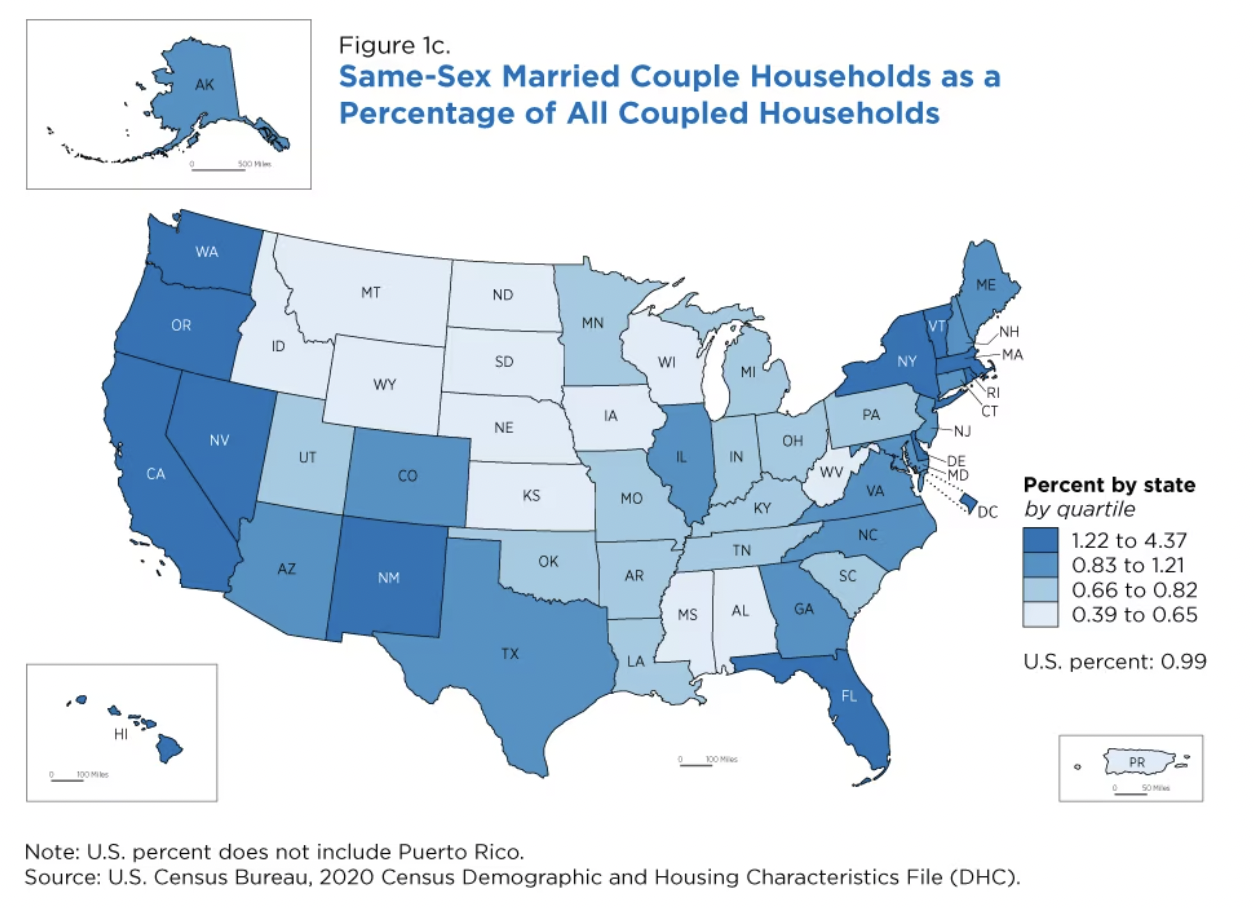The number of people living alone in the U.S. is on the incline while couples living together are decreasing, per newly released 2020 U.S. Census Bureau data.
Why it matters: The decennial census figures show the changing trends in demographics and housing for American families.
Driving the news: One-person households increased to about 28% of all U.S. households in 2020.
- That's up from 25% in 1990 and 7.7% in 1940.
- That means 0ver a quarter of occupied U.S. households in 2020 consisted of one person living alone.
- The share of "nonfamily households" — those in which someone lives alone or no one related to the householder is present — increased by 12%.
Zoom out: Families remained the largest type of U.S. households, with the majority consisting of married couples.
- About two-thirds of all households were family households, the same share as a decade earlier.
- Married-couple households accounted for about 71% of them.

Yes, but while coupled households are still the most common, their share declined to 53.2% in 2020 – down from 55.1% in 2010 and 56.9% in 2000.
- Coupled households are when the householder lives with a spouse or partner.
- The majority of such households were opposite-sex married couples (45.7%), followed by opposite-sex unmarried (6.5%), same-sex married (0.5%) and same-sex unmarried (0.4%).
- The highest percentage of coupled households of all types were in the West, while the most opposite-sex married couples were concentrated in the southern U.S.
- The South also has the lowest share of opposite-sex unmarried couples living together.
Of note: The number of female householders (35.5 million) with no spouse or partner present was higher than that of males (23.9 million).

Same-sex couple households
Same-sex couples made up about 1% of U.S. households in 2020, per the newly released U.S. Census Bureau data.
By the numbers: Married same-sex couples made up 0.5% of 127 million U.S. households, while unmarried ones made up nearly 0.4%, totaling about 1.2 million same-sex households, survey results show.
- That's up from 980,000 same-sex couple households in 2019.
- The states with the highest concentrations of same-sex married couples were along the West Coast and in the Northeast, plus Delaware, the District of Columbia, Florida, Hawaii and New Mexico, per the Census.
Context: It's the first time the decennial census has shown distinct totals of opposite-sex and same-sex spouse and unmarried partner households.
- Previous censuses have had limited data on same-sex couples and the latest is the most comprehensive set of information for the U.S. yet.
- The data doesn’t include information on single or transgender people, meaning it covers less than a fifth of the LGBT population, Kerith Conron, research director at the UCLA School of Law’s Williams Institute, told the Wall Street Journal.








